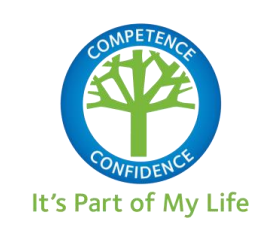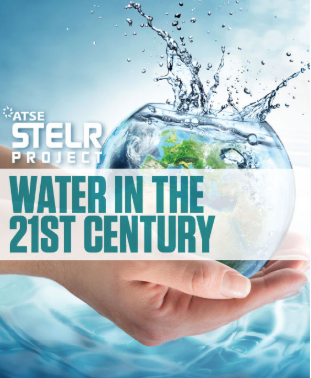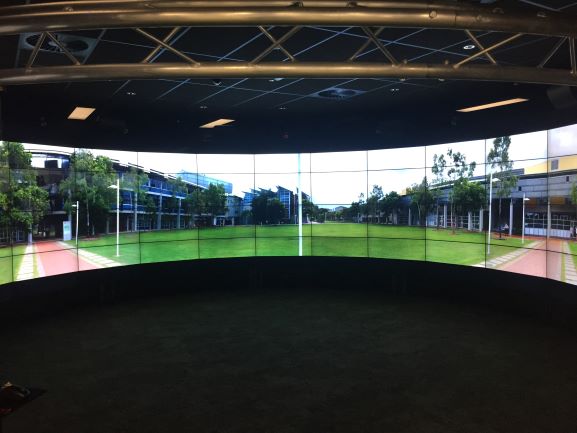Improving mathematics & science education
/prod01/channel_8/media/scu-dep/research/images/photo-1509228468518-180dd4864904.jpg)
Overview of Impact
There’s widespread acceptance that both levels of student engagement with mathematics and science in the school environment, along with the skills and confidence of classroom teachers to teach these subjects, are inadequate to meet the future needs of an advanced technological society such as Australia.
Associate Professor Geoff Woolcott, working with colleagues at Southern Cross University and other regional universities, has developed a research agenda focusing on addressing these issues via projects within science, technology, engineering and mathematics (STEM) education. These projects are bringing the everyday world into university and school classrooms. Collectively these projects have had significant impact on curriculum, pedagogy, assessment and teacher professional learning.
- University educators
- Undergraduate students
- Pre-service teachers
- Teachers
- Education policy makers
- Curriculum developers
- Industry and Community
The impact of this body of research has greatly expanded research networks leading to increased reach and significance, nationally and internationally, across the school education and higher education sectors and the broader community. A/Prof Woolcott and partners have documented the quality and quantity of outputs as well as evidenced behavioural changes and other outcomes (as detailed below), focussing on enabling people to work together to solve complex problems using goal-driven relationship networks.

The project It’s part of my life: Engaging university and community to enhance science and mathematics education (IPOML) was conducted across the six partner universities of the Regional Universities Network (RUN). Teacher educators developed the competence and confidence that they require for teaching through engaging with scientific and mathematical thinking in order to solve problems that they come across as part of their life. The reach of IPOML was extended across a collaborative network of over 500 participants, from universities, government and communities, including over 80 scientists, mathematics and pedagogy experts in more than 20 schools and faculties. As well, IPOML has entered the lives of over 1000 teacher education students and 1500 classroom students (and their teachers) from Foundation to Year 12 across three states and has been integrated into the teacher education curriculum across the six partner universities.

The teaching module, Water in the 21st Century was developed as part of the project, Inspiring Science & Mathematics Education (iSME). This teaching module has been adopted as part of the Science and Technology Education Leveraging Relevance (STELR) program used in more than 600 Australian schools, with online support materials delivered through the Stile online platform and available through a number of Australian organisations (e.g., Australian Science Teachers Association, Australian Association of Mathematics Teachers, and Australian Mathematical Sciences Institute). A combined team from SCU2 and Australian Academy of Technology and Engineering (ATSE) has extended the reach of Water in the 21st Century through more than 25 professional learning workshops and symposia for Australian teachers and teacher educators. Additionally, team members have conducted ‘train the trainer’ workshops for more than 100 teachers and educational policy makers from more than 15 countries at events organised by the Southeast Asian Ministers of Education Organization (SEAMEO). The Water in the 21st Century module has now been translated into Indonesian and is being trialled in countries, for example Nepal, who want to enrich their understanding of water issues.
Another STEM project, the RUN Digital Classroom, focused on virtual technologies. This project piloted a maths and science digital classroom that can be accessed, regardless of location, for engaging, enriched and leading-edge mathematics and science learning aligned to the Australian Curriculum. This project was a collaboration between RUN partners, the Commonwealth Scientific and Industrial Research Organization (CSIRO), the Primary Industry Centre for Science Education (PICSE), and Australian Mathematical Sciences Institute (AMSI). This project generated real enthusiasm and interest among more than 3,000 students and 400 teachers who participated from 40 regional schools. Programs developed at SCU involved 12 university educators, 17 scientists, 14 teachers and over 100 students from years 7-10. The project also provided 12 Professional Learning Days delivered by RUN institutions in conjunction with AMSI, PICSE, and CSIRO, attracting a total of 325 teachers. The Professional Learning Days at SCU (46 teachers) achieved a greater than 90% approval rate for each 1-day workshop. SCU also contributed to the establishment of Science for Growth Awards, with over 20 individual projects submitted and an award to a school in the SCU educational footprint.
The Bite size maths (BSM) project, also focused on virtual technologies, provided viable and cost-effective tools to enhance students’ confidence in mathematics and to grow competencies of at-risk university students, particularly those from low SES backgrounds in regional/remote locations. Modules have been embedded in RUN university undergraduate mathematics curriculum involving more than 1,500 students and the web-based modules are now available online for self-regulated learning for high school students and adult learners.
The CAVE project, being conducted conjointly with RUN partners, focuses more directly on virtual technologies. This project is giving initial teacher educators experience in spatially-based problem solving via the multiuser immersive environment, CAVE2TM, a 320-degree, cylindrical 3D virtual environment. So far over 100 undergraduate and postgraduate students have explored their capacity to design and solve rich spatial reasoning tasks and activities in this environment. The experience has provided evidence of improved students understanding of parallel lines, geometric shapes, 2D and 3D conversions, path making in 3D versus 2D, and perspective as students relate to views in this virtual world as compared with 2D screen and paper views. The CAVE project is scalable for use with school classes, which will provide further impact in the community through use of emerging augmented reality (AR) technologies.
It’s part of my life: Engaging university and community to enhance science and mathematics education (IPOML, 2013-2017, $1M). Office for Learning and Teaching grant administered by the Department of Education and Training as part of the Enhancing the Training of Maths and Science Teachers program (ETMST), lead Woolcott, Southern Cross University1 with Regional Universities Network partners. The project produced an innovative Enhancement-Lesson-Reflection (ELR) process designed primarily for pre-service teachers to improve their teaching by connecting their classroom students with the science and maths that is part of every-day life. This project has demonstrated that the ELR process in single or multiple iterations is effective and adaptable in the wide range of teaching environments that occur in regional and rural Australia. The project delivered a wide range of extensively trialled resources to assist university educators embed the process into teacher education courses: videos, instruments, and an online user manual. The ELR process has been successful in building pre-service teacher awareness of emotional states as a feedback mechanism for their understanding the relationship between teaching experiences and their emotions. This in turn has assisted their growth in confidence and feelings of competence in their ability to create a supportive learning environment.
The impact of IPOML is evident in the enacting and embedding of the innovative ELR process in teacher education and other curriculum as lecture and tutorial materials, assignments, investigative tasks, forums and discussion boards, with direct impacts including:
- Positive student feedback about how the processes supported mathematics in everyday life;
- Classroom teacher participants keen to use this approach to engage students positively;
- An accessible and structured approach based on the emotional experience of teaching;
- Strong, positive impacts on pre-service teachers’ competence and confidence; and,
- Pre-service teachers’ enhanced understanding and excitement and enthusiasm for their role.
Completing the enhancement, teaching and reflection process will have a lasting impact on my teaching as I have gained a range of skills, which I can utilise throughout my future career. I experienced great student engagement through discussion of real-world examples, physical manipulatives and IT. It has helped me to see the importance of seeking advice and collaborating with others to develop well-scaffolded and interesting lessons. (Pre-service teacher)
Inspiring Science & Mathematics Education (iSME, 2014-2016, $1M). Australian Maths and Science Partnership Program (AMSPP), lead Southern Cross University2, Woolcott CI, with Charles Darwin University, the University of Wollongong, the Australian Academy of Technological Engineering and Stile Education Pty Ltd. The project produced new modules on STEM-related hot topic issues and modules are available to Australian and international schools via STELR website and through the Stile Education platform. Each module is a stand-alone package that include case studies, career profiles and teacher toolkit activities, published as both word documents, pdf documents and using the Stile Education platform. The modules contributed to the addition of more than 50 new schools to the STELR program. General impacts include:
- Extension of university-community networks across more than 40 schools and community groups:
- Raising the profile of the RUN universities among regional schools; and,
- Improved leveraging of current research activity in making cutting-edge scientific and mathematical research more widely known and accessible.
Regional Universities Network (RUN) Maths and Science Digital Classroom: A connected model for all of Australia (The RUN Digital Classroom, 2013-2016, $1M). Australian Maths and Science Partnership Program (AMSPP) Priority Project, lead University of Southern Queensland, RUN partners (with A/Prof Woolcott as Board Member and institutional Coordinator3) as well as AMSI, PICSE, and secondary and primary schools in regional and peri-urban Queensland, New South Wales and Victoria. The project harnessed the greatly enhanced digital connectivity that came with the national broadband roll-out, enabling the project partners to pilot a Virtual Centre that could ensure that, regardless of location and resourcing, schools anywhere in Australia can provide engaging, enriched and leading-edge education in mathematics and science.
Bite size maths: Building mathematics capability of low SES students in regional/remote Australia. (BSM, 2016-2017, $0.14M), Higher Education Participation and Partnerships Programme (HEPPP), 2015 National Priorities Pool, lead Woolcott, with Boyd, Markopoulos and Mason at Southern Cross University and RUN partners. The project was trialled at RUN institutions in 2017 and rolled out nationally in 2018 with continuous virtual access through web hosting and is now also available for school students. The project has considerable carry-forward impact for Australian mathematics education and will positively impact the Australian economy by contributing to developing a pool of numerate citizens across a range of professions. It will also have a strong positive impact on social and quality of life dimensions through an intervention that not only improves mathematical competencies needed for everyday life, but also builds individuals’ confidence in their mathematical abilities.
CAVE2TM, facility, a partnership initiative of University of the Sunshine Coast (USC) and the Australian Government’s Education Investment Fund (with a funding contribution of $30 million). At this early project stage, two RUN partners, SCU & USC, have used the potential of this new learning space to develop spatial reasoning and thinking in undergraduate students. This unique virtual space, located at USC, enables visualisation of large data sets, manipulation of computer-generated objects, immersion in virtual environments, and 320-degree panoramic views of virtual objects and displays. As its name suggests, you step into the cave and are immediately immersed in whatever environment is projected on the walls. You can also view projected 3D objects that appear to ‘hang’ in space from whatever angle they are rotated. Initial teacher education provided with a CAVE2TM experience were able to develop learning activities suitable for primary or secondary school mathematics students.
1 Other SCU researchers who contributed to It’s part of my life were Professor Richard Bush, Professor Scott Johnson, Professor Andrew McAuley, Professor Andrew Rose, Professor Anja Scheffers, Professor Caroline Sullivan, Professor Leigh Sullivan, Associate Professor Kirsten Benkendorff, Associate Professor Amanda Reichelt-Brushett, Associate Professor Geoff Woolcott (project leader and partner team leader), Dr Tim Dalby, Dr Jim Donnelly, Dr Nicola Jayne, Dr Renaud Joannes-Boyau, Dr Maree Lake, Dr Hanabeth Luke, Dr Christos Markopoulos, Dr Debra Stokes, Dr Dan Waters, Dr Lachlan Yee, Dr Tony Yeigh, Peta Beeman, Alan Foster, Amanda Isaac, Cathy Lembke, Amanda Scott (project manager), Dennis Thomson, Professor Amy Cutter-Mackenzie-Knowles (reference group member) and Professor Robyn Keast (reference group member).
2 The SCU team of researchers contributing to the Inspiring Science and Mathematics Education (iSME) project were Professor Leigh Sullivan, Professor Anja Scheffers, Associate Professor Geoff Woolcott, Alan Foster and Professor Amy Cutter-Mackenzie-Knowles.
3 SCU participants in the RUN Maths and Science Digital Classroom project were: Professor Andrew Rose, Professor Anja Scheffers, Professor Caroline Sullivan, Associate Professor Geoff Woolcott (board member), Dr Dirk Erler, Dr Renaud Joannes-Boyau, Associate Professor Amanda Reichelt-Brushett, Peta Beeman and Alan Foster.

/prod01/channel_8/media/scu-dep/current-students/images/Coffs-harbour_student-group_20220616_33.jpg)
/prod01/channel_8/media/scu-dep/current-students/services/counselling/images/RS21533_English-College-Student_20191210_DSC_6961.jpg)
/prod01/channel_8/media/scu-dep/study/scholarships/images/STEPHANIE-PORTO-108-2.jpg)
/prod01/channel_8/media/scu-dep/study/arts-and-humanities/images/RS20958_Chin-Yung-Pang-Andy_20190309__79I5562-960X540.jpg)
/prod01/channel_8/media/scu-dep/experience/images/SCU-INTNL-STUDY-GUIDE-280422-256.jpg)
/prod01/channel_8/media/dep-site-assets/component-library/screenshots/online-1X1.jpg)
